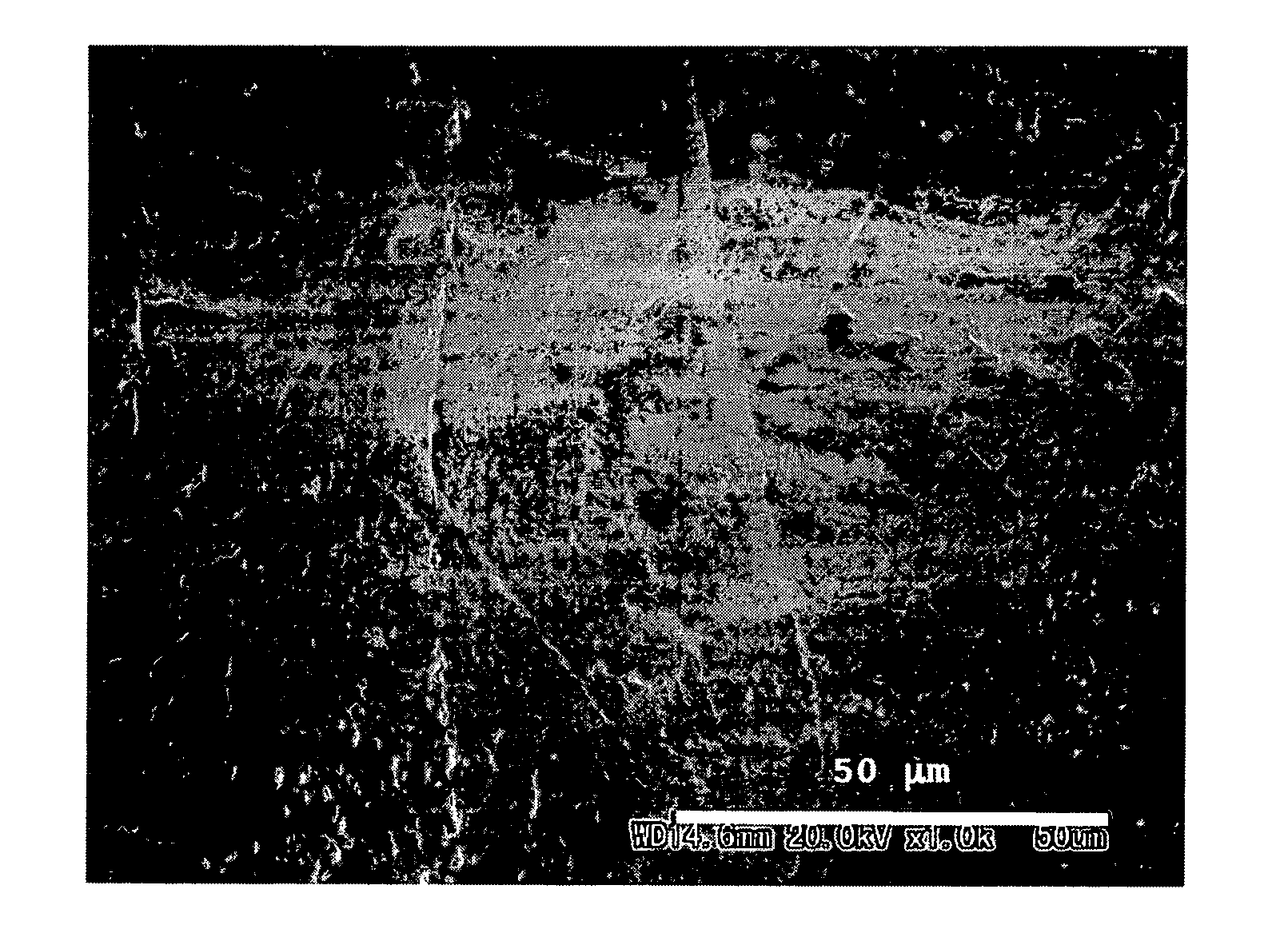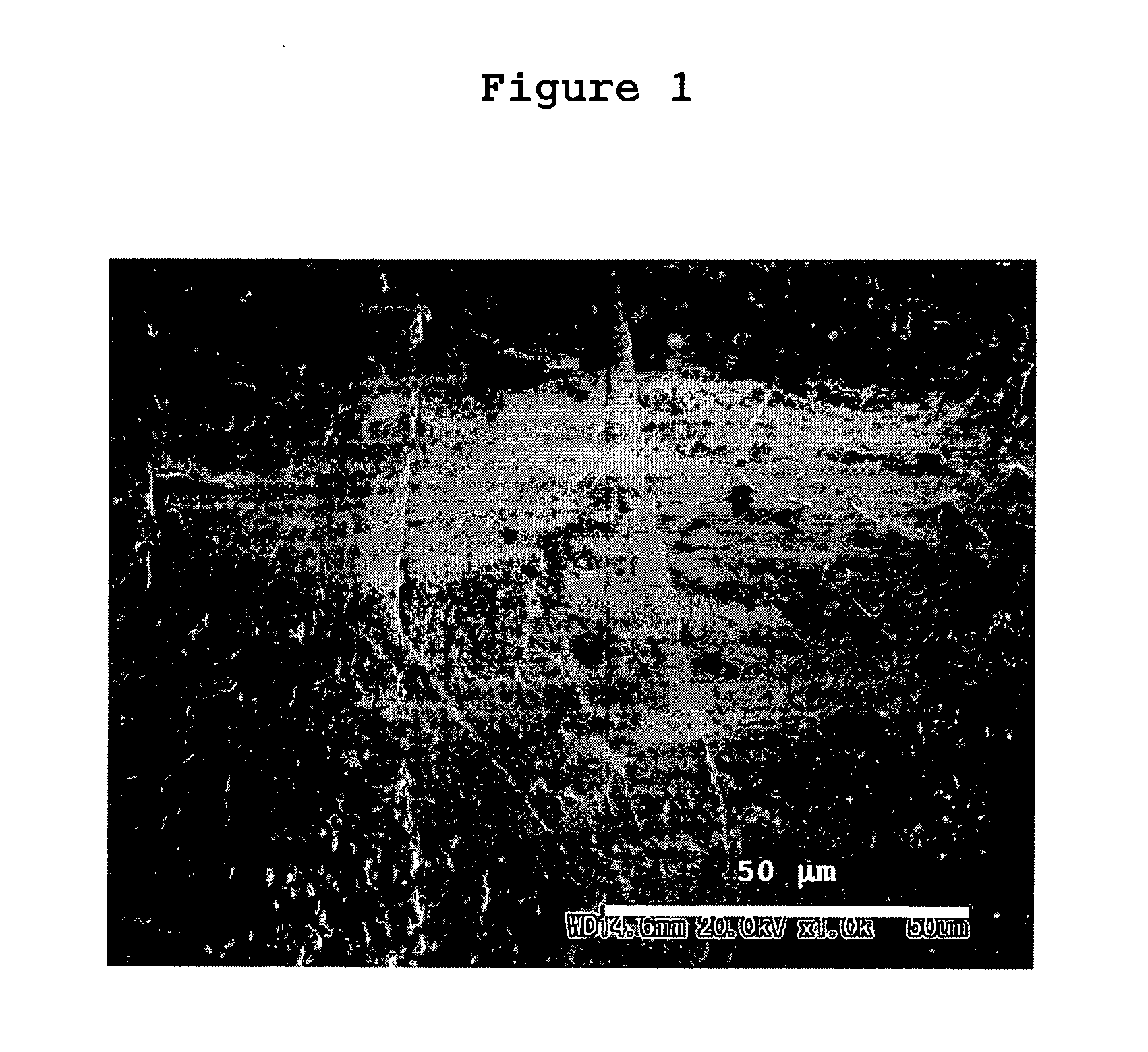Novel polypeptide and process for producing the same
a polypeptide and polypeptide technology, applied in the field of new polypeptides, can solve the problems of scarring tissue, natural collagen cannot exert cell selectivity for any application, and the risk of infection (or transmission) to pathogenic organisms,
- Summary
- Abstract
- Description
- Claims
- Application Information
AI Technical Summary
Benefits of technology
Problems solved by technology
Method used
Image
Examples
example 1
[0107] A peptide represented by the formula H-(Pro-Pro-Gly)10-OH (Sequence ID No. 1) (manufactured by Peptide Institute, Inc.) was dissolved in water containing 50% methyl alcohol at a concentration of 0.25 mg / mL, and a circular dichroism spectrum thereof was measured with a spectrometer (J-725, manufactured by JASCO Corp., light path: 1 mm) The result showed that positive Cotton effect was observed at a wavelength of 227 nm and negative Cotton effect at a wavelength of 197 nm were observed, and confirmed that the peptide formed a triple helical structure. Moreover, with respect to the same solution, the molecular weight was measured by gel-permeation chromatography (AKTA purifier system, manufactured by Amarsham Bioscience K.K., column: Superdex Peptide PE 7.5 / 300, flowrate: 0.25mL / min., eluent: 10 mM phosphate buffer (pH 7.4) containing 150 mM NaCl). The result confirmed two peaks: one peak showing a molecular weight of about 9000 corresponding to a triple helical structure, and a...
example 2
[0111] A peptide chain represented by the formula H-(Pro-Pro-Gly)5-OH (Sequence ID No. 2) was synthesized by a solid-phase synthesis with an automatic peptide synthesis machine. That is, with the use of 0.1 mmol of a particulate resin [HMP glycine, manufactured by Applied Biosystems (US)] which comprises a styrene-divinylbenzene copolymer containing 4-(Nα-9-(fluorenylmethoxycarbonyl)-glycine)-oxymethyl-phenoxy-methyl group in a proportion of 0.65 mmol / g (resin) [component molar ratio of styrene relative to divinylbenzene: 99 / 1], the carboxyl terminal of one amino acid was sequentially linked (or bound) to the amino terminal of the other amino acid so as to obtain the object peptide. In this link reaction, 1 mmol of Nα-9-(fluorenylmethoxycarbonyl)-L-proline [Fmoc-proline] and 1 mmol of Nα-9-(fluorenylmethoxycarbonyl)-glycine [Fmoc-glycine] (manufactured by Applied Biosystems (US)) were used as amino acids in each linking step.
[0112] The peptide resin obtained in the foregoing manner...
example 3
[0118] A peptide represented by the formula H-(Pro-Hyp-Gly)10-OH (Sequence ID No. 3) (manufactured by Peptide Institute, Inc.) was dissolved in water or water containing 50% of methyl alcohol to prepare a solution having a concentration of 0.25 mg / mL, and a circular dichroism spectrum thereof was measured with a spectrometer (J-725, manufactured by JASCO Corp., light path: 1 mm). In water, the result showed that positive Cotton effect was observed at a wavelength of 225 nm and negative Cotton effect at a wavelength of 195 nm, and confirmed that the peptide formed a triple helical structure. Moreover, the same solution was subjected to a gel-permeation chromatography (AKTA purifier system, manufactured by Amarsham Bioscience K.K., column: Superdex Peptide PE 7.5 / 300, flow rate: 0.25 mL / min., eluent: 10 mM phosphate buffer (pH 7.4) containing 150 mM NaCl) thereby confirming one peak showing a molecular weight of about 9000 corresponding to a triple helical structure. The molecular wei...
PUM
| Property | Measurement | Unit |
|---|---|---|
| molecular weight distribution | aaaaa | aaaaa |
| pH | aaaaa | aaaaa |
| temperature | aaaaa | aaaaa |
Abstract
Description
Claims
Application Information
 Login to View More
Login to View More - R&D
- Intellectual Property
- Life Sciences
- Materials
- Tech Scout
- Unparalleled Data Quality
- Higher Quality Content
- 60% Fewer Hallucinations
Browse by: Latest US Patents, China's latest patents, Technical Efficacy Thesaurus, Application Domain, Technology Topic, Popular Technical Reports.
© 2025 PatSnap. All rights reserved.Legal|Privacy policy|Modern Slavery Act Transparency Statement|Sitemap|About US| Contact US: help@patsnap.com


